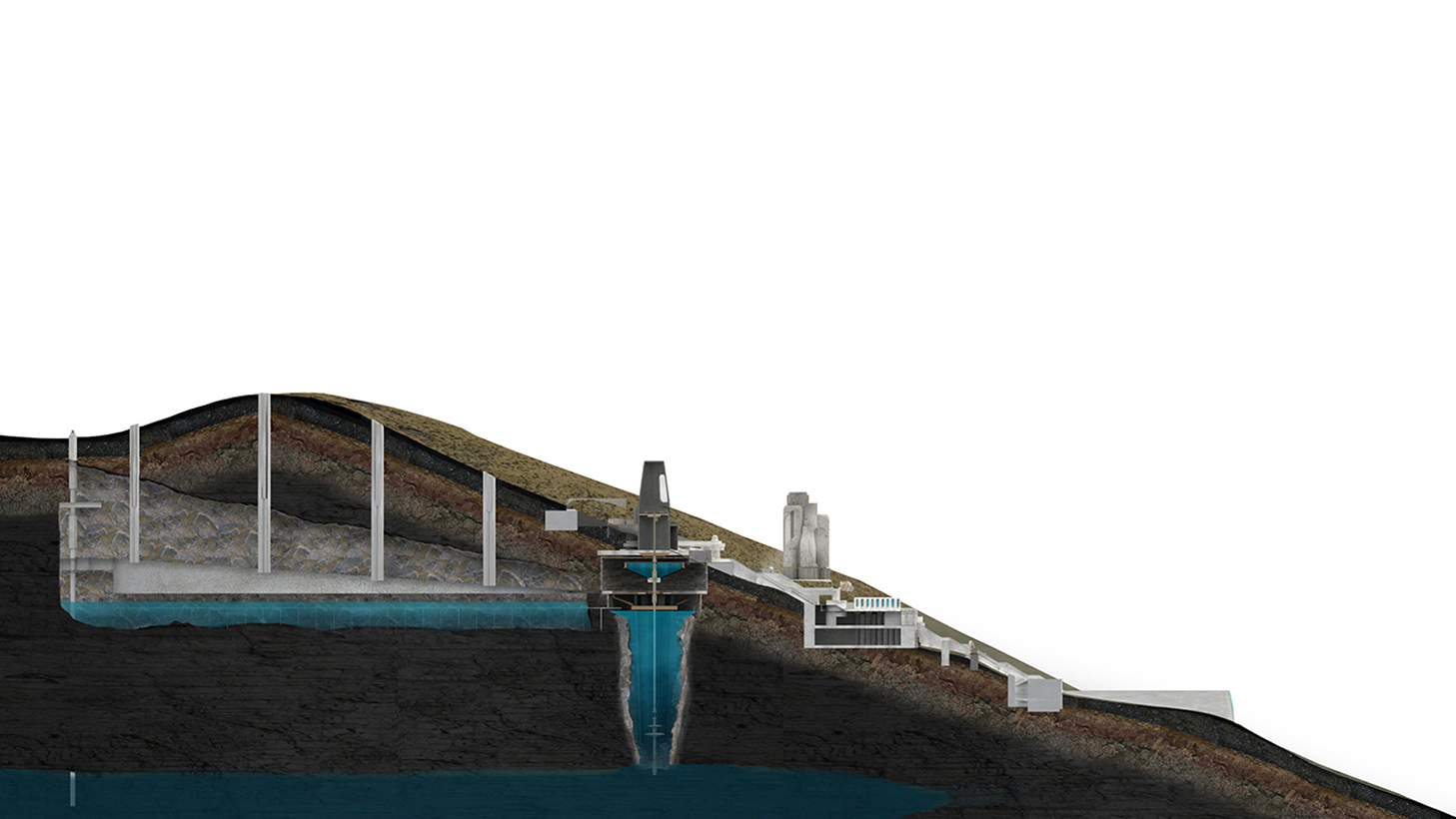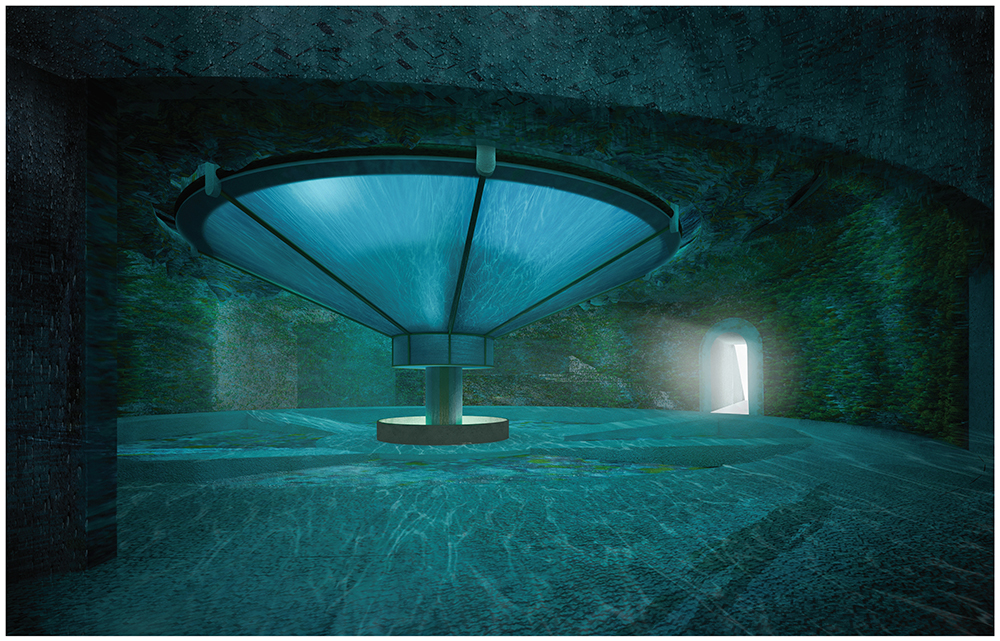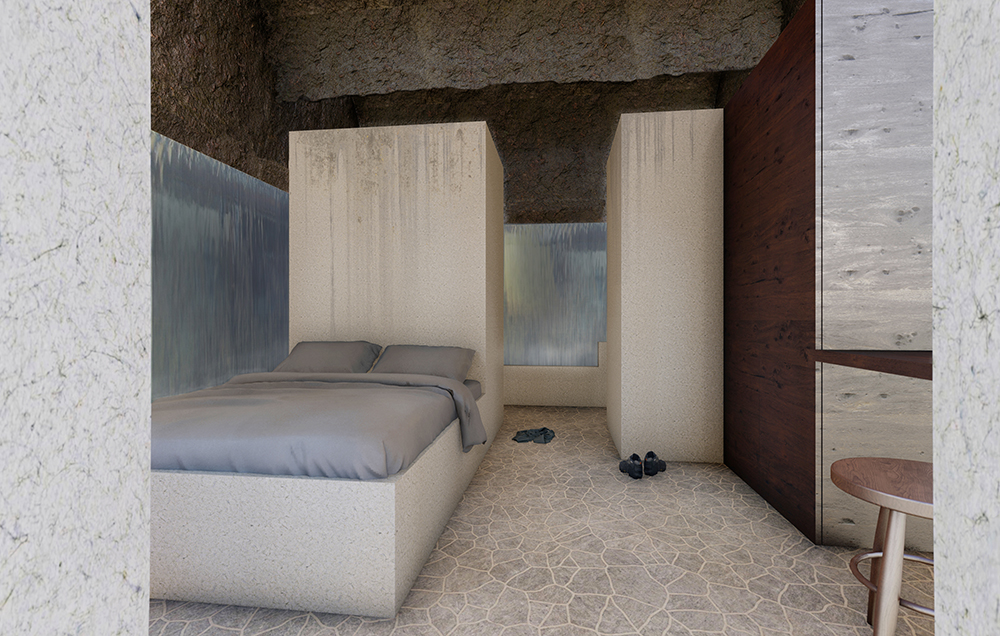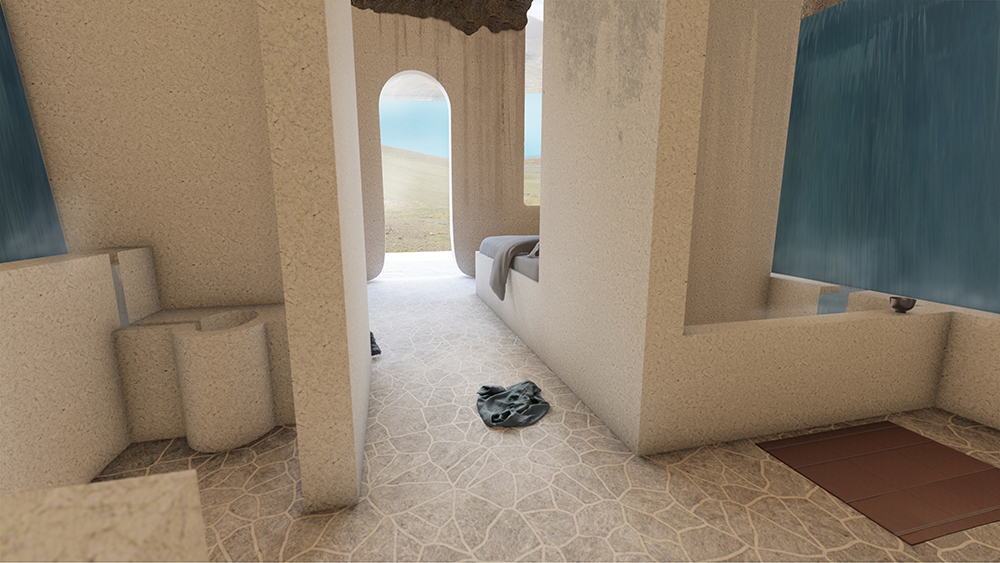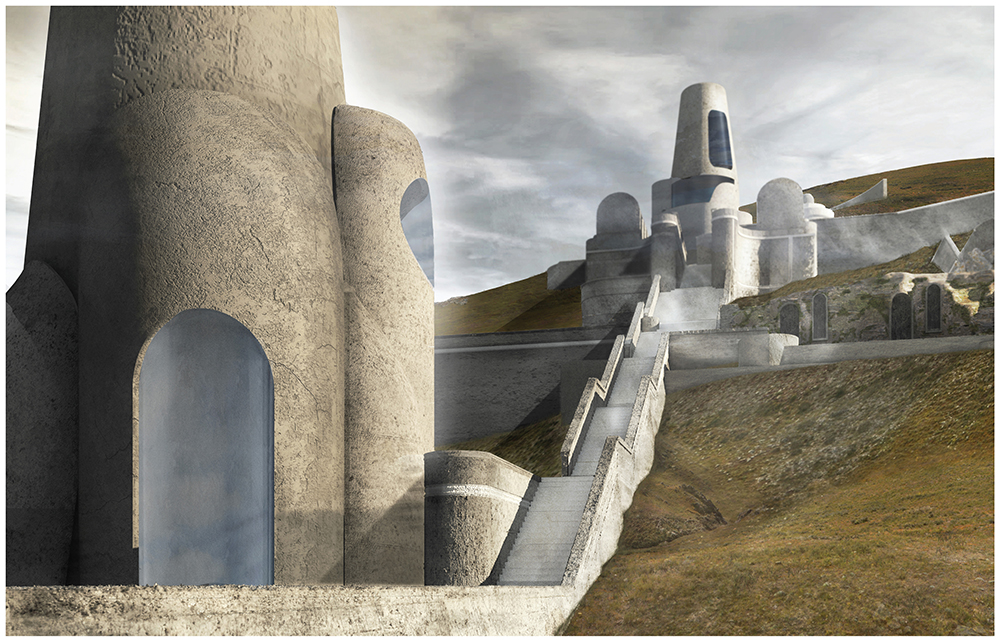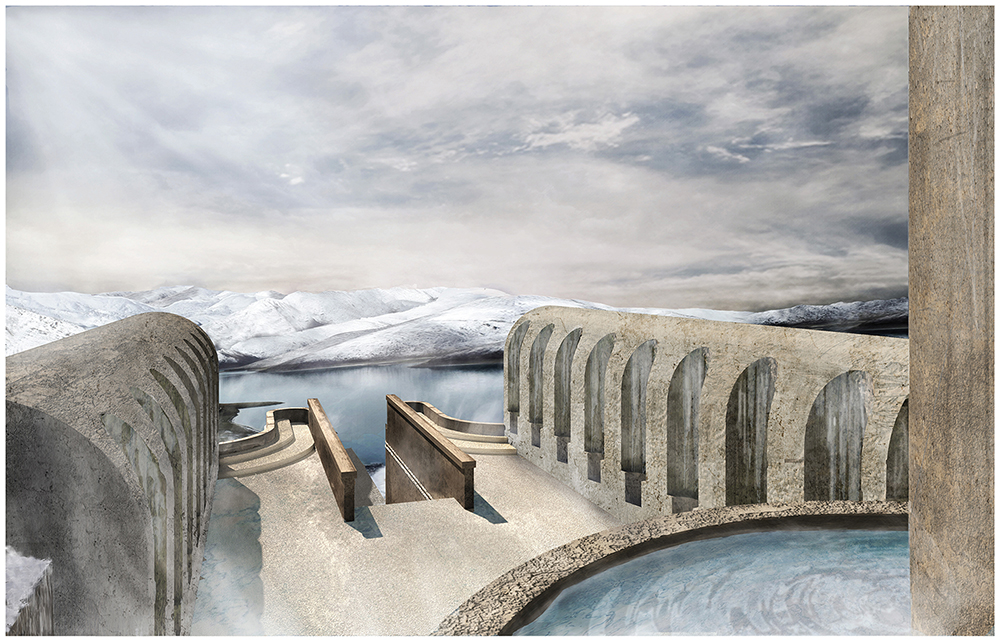Future distribution of one-sixth of the world’s freshwater currently locked in Himalayan glaciers will inevitably be a primary focus of think tanks held at this Resource Policy Retreat Center. By conceptualizing freshwater as a hyperobject, a term coined by Timothy Morton and defined as something “massively distributed in space and time relative to humans” (Morton, 2013), we investigate the role that architecture plays in how thinkers engage with an entity that is beyond the scale and direct access of a group of twenty individuals. Does the presence and movement of the resource in question shape thought in new ways? Throughout the complex, water is active, breaking conventional functions of water and becoming “present at hand,” rather than a component of a scenic backdrop (Heidegger, 1927). The building’s machine-like aesthetic confronts false dichotomies of man and nature and positions human actions and systems as inseparable from surrounding ecosystems.
By aestheticizing the interactions between building and site, while utilizing the building as an index of freshwater ebb and flows, we argue that the idea that this site would otherwise be pristine or static “Nature” is false. Human presence on-site does not contaminate Nature, but it does shape new ecological interactions. The design pushes the experiential qualities of the building beyond visual perception and directly influence occupants by the climatic qualities of their contextual surroundings. By continuously changing the role of water, the architecture repositions the ways that visitors typically interact with water within a building, challenging scholars to think about the resource in new ways.
In collaboration with Brenna Thompson.

